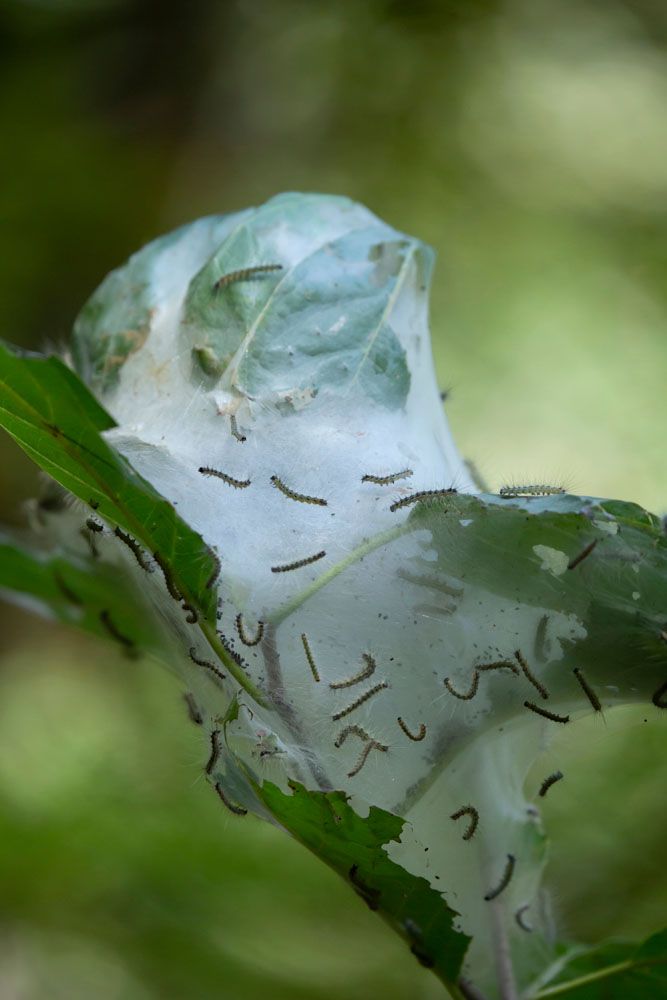
Fall Webworm – Hyphantria cunea
Fall Webworm – Hyphantria cunea
Common Name: Fall Webworm
Latin Name: Hyphantria cunea
Appearance:
Fall webworm moths have unique northern and southern larvae. They have a black head, a yellow or green body, and a dark stripe along the middle of their backs if found in the north. There are tufts of white hairs protruding from the black dots on their sides. Their orange or red heads and yellow or light brown bodies are characteristic of their southern habitat. Larvae have quite long hair. The adults’ wings become white in the northern parts of their territory. Many of them acquire their spotted grey colouring in the southern half of their range. They have wedge-shaped wings. The hue of their forelegs is somewhere between orange and red.
Host plant:
Over 100 hardwood tree species, including alder, ash, choke-cherry, cottonwood, elm, maple, various fruit trees, walnut, and willow
Territory:
The fall webworm’s range in North America is transcontinental, ranging from southern Canada to northern Mexico.
Damages caused by fall webworm:
This insect causes modest defoliation in most wooded areas.Large infestations can encircle and defoliate whole trees, a common occurrence on narrowleaf cottonwood along Colorado streams. Significant defoliation may undermine tree defences against other opportunistic agents. The fall webworm, the most prevalent tent-forming defoliator in much of North America, can cause a loss of aesthetic quality in attractive plants owing to the ugly tents Hordes of hairy, full-grown autumn webworm larvae can be a significant if fleeting, inconvenience.
Life history and Habits:
There is typically just one generation that is born each year, but in warm years and other regions, two generations are born.Late in July, enormous silken nests with sloppy construction that are unattractive start forming on roadside branches or wild hardwood trees. By August and September, the web will have grown to be huge and may have joined together.
